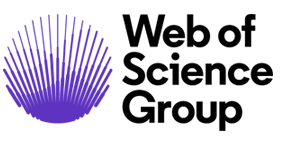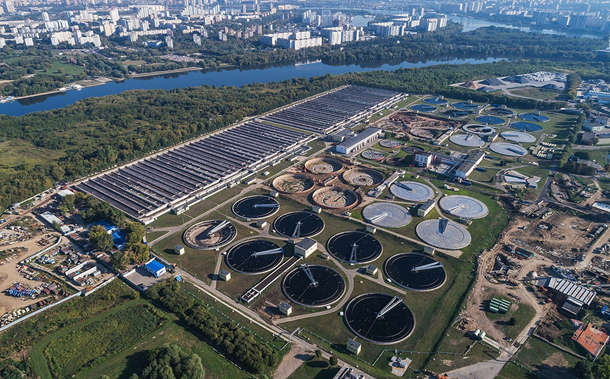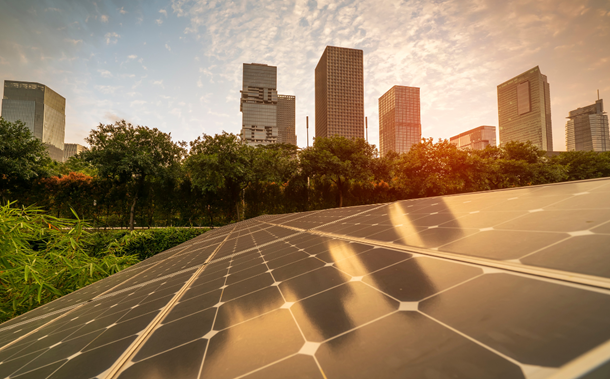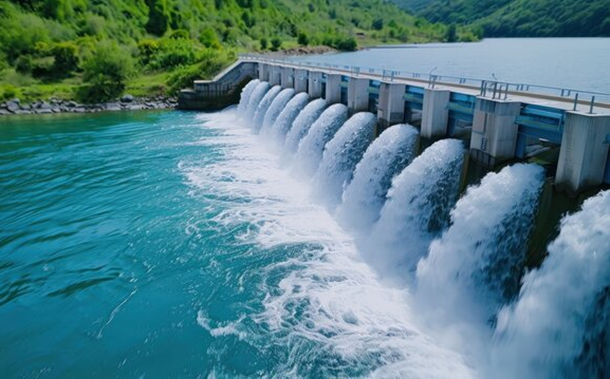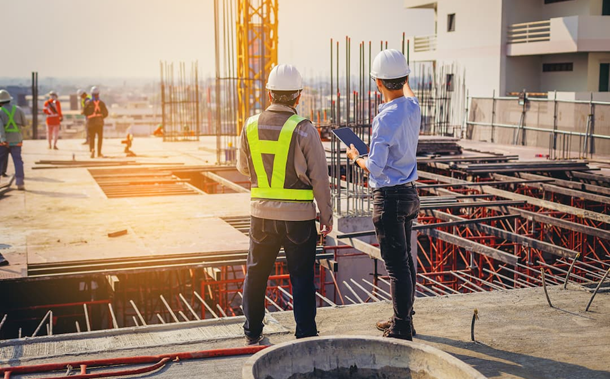Performance Study of Buried Pipelines under Static Loads
Downloads
Doi:10.28991/CEJ-2022-08-01-01
Full Text:PDF
Downloads
[2] Donmez, D., Gencoglu, M., & Donmez, A. A. (2019). Experimental assessment of TRC cylindrical tube-shaped units. ISEC 2019 - 10th International Structural Engineering and Construction Conference, 2–7. doi:10.14455/isec.res.2019.74.
[3] Viparelli, R., De Luca, A., Santorelli, S., & Pizza, A. G. (2001). Pre-stressed concrete large-diameter pipes: joint behaviour during earthquakes. WIT Transactions on The Built Environment, 57.
[4] Wang, S., Liu, F., & Yu, W. (2011). Investigation on computational method for crack of reinforced concrete pipeline under internal pressure retrofitted with FRP. AEngineering Plasticity and Its Applications - Proceedings of the 10th Asia-Pacific Conference, AEPA 2010, 19–24. doi:10.1142/9789814324052_0004.
[5] Tahamouli Roudsari, M., Samet, S., Nuraie, N., & Sohaei, S. (2017). Numerically based analysis of buried GRP pipelines under earthquake wave propagation and landslide effects. Periodica Polytechnica Civil Engineering, 61(2), 292–299. doi:10.3311/PPci.9339.
[6] Ozdemir, Z., Coulier, P., Lak, M. A., François, S., Lombaert, G., & Degrande, G. (2013). Numerical evaluation of the dynamic response of pipelines to vibrations induced by the operation of a pavement breaker. Soil Dynamics and Earthquake Engineering, 44, 153–167. doi:10.1016/j.soildyn.2012.09.012.
[7] Ozdemir, Z., Lak, M. A., François, S., Coulier, P., Lombaert, G., & Degrande, G. (2011). A numerical model for the prediction of the response of pipelines due to vibrations induced by the operation of a pavement breaker. Proceedings of the 8th International Conference on Structural Dynamics, EURODYN 2011, July, 928–935.
[8] Trautmann, C. H., & O'Rourke, T. D. (1985). Lateral force-displacement response of buried pipe. Journal of Geotechnical Engineering, 111(9), 1077-1092. doi:10.1061/(ASCE)0733-9410(1985)111:9(1077).
[9] Trautmann, C. H., O'Rourfce, T. D., & Kulhawy, F. H. (1985). Uplift force-displacement response of buried pipe. Journal of Geotechnical Engineering, 111(9), 1061-1076. doi: 10.1061/(ASCE)0733-9410(1985)111:9(1061).
[10] Sakanoue, T., & Yoshizaki, K. (2003). Experimental study on the effect of light-weight backfill for enhancement of earthquake resistance of buried pipelines. Proceedings of the International Conference on Offshore Mechanics and Arctic Engineering - OMAE, 2, 699–703. doi:10.1115/OMAE2003-37228.
[11] Gibson, I., Rosen, D., & Stucker, B. (2015). Additive Manufacturing Technologies. doi:10.1007/978-1-4939-2113-3.
[12] Huang, S. H., Liu, P., Mokasdar, A., & Hou, L. (2013). Additive manufacturing and its societal impact: A literature review. International Journal of Advanced Manufacturing Technology, 67(5–8), 1191–1203. doi:10.1007/s00170-012-4558-5.
[13] Vaezi, M., Seitz, H., & Yang, S. (2013). A review on 3D micro-additive manufacturing technologies. International Journal of Advanced Manufacturing Technology, 67(5–8), 1721–1754. doi:10.1007/s00170-012-4605-2.
[14] Chua, C. K., Wong, C. H., & Yeong, W. Y. (2017). Standards, quality control, and measurement sciences in 3D printing and additive manufacturing. Academic Press.
[15] Maas, G., & Van Gassel, F. (2005). The influence of automation and robotics on the performance construction. Automation in Construction, 14(4), 435–441. doi:10.1016/j.autcon.2004.09.010.
[16] Zavadskas, E. K. (2010). Automation and robotics in construction: International research and achievements. Automation in Construction, 19(3), 286–290. doi:10.1016/j.autcon.2009.12.011.
[17] Kittusamy, N. K., & Buchholz, B. (2004). Whole-body vibration and postural stress among operators of construction equipment: A literature review. Journal of Safety Research, 35(3), 255–261. doi:10.1016/j.jsr.2004.03.014.
[18] Meliá, J. L., Mearns, K., Silva, S. A., & Lima, M. L. (2008). Safety climate responses and the perceived risk of accidents in the construction industry. Safety Science, 46(6), 949–958. doi:10.1016/j.ssci.2007.11.004.
[19] OSHD Annual Report (2017) - Ministry of Manpower, Occupational Safety And Health Division; Singapore.
[20] Azhar, S. (2011). Building information modeling (BIM): Trends, benefits, risks, and challenges for the AEC industry. Leadership and Management in Engineering, 11(3), 241–252. doi:10.1061/(ASCE)LM.1943-5630.0000127.
[21] Bryde, D., Broquetas, M., & Volm, J. M. (2013). The project benefits of building information modelling (BIM). International Journal of Project Management, 31(7), 971–980. doi:10.1016/j.ijproman.2012.12.001.
[22] Conner, B. P., Manogharan, G. P., Martof, A. N., Rodomsky, L. M., Rodomsky, C. M., Jordan, D. C., & Limperos, J. W. (2014). Making sense of 3-D printing: Creating a map of additive manufacturing products and services. Additive Manufacturing, 1, 64–76. doi:10.1016/j.addma.2014.08.005.
[23] Thomas, D. S., & Gilbert, S. W. (2014). Costs and cost effectiveness of additive manufacturing. NIST special publication, 1176, 12. doi:10.6028/nist.sp.1176.
[24] Kothman, I., & Faber, N. (2016). How 3D printing technology changes the rules of the game Insights from the construction sector. Journal of Manufacturing Technology Management, 27(7), 932–943. doi:10.1108/JMTM-01-2016-0010.
[25] Newman, J., & Choo, B. S. (2003). Advanced concrete technology. In Advanced Concrete Technology. Elsevier. doi:10.1016/B978-0-7506-5686-3.X5246-X.
[26] Souza, M. T., Ferreira, I. M., Guzi de Moraes, E., Senff, L., & Novaes de Oliveira, A. P. (2020). 3D printed concrete for large-scale buildings: An overview of rheology, printing parameters, chemical admixtures, reinforcements, and economic and environmental prospects. Journal of Building Engineering, 32(September). doi:10.1016/j.jobe.2020.101833.
[27] Kristombu Baduge, S., Navaratnam, S., Abu-Zidan, Y., McCormack, T., Nguyen, K., Mendis, P., Zhang, G., & Aye, L. (2021). Improving performance of additive manufactured (3D printed) concrete: A review on material mix design, processing, interlayer bonding, and reinforcing methods. Structures, 29(November), 1597–1609. doi:10.1016/j.istruc.2020.12.061.
[28] Hambach, M., & Volkmer, D. (2017). Properties of 3D-printed fiber-reinforced Portland cement paste. Cement and Concrete Composites, 79, 62–70. doi:10.1016/j.cemconcomp.2017.02.001.
[29] Marchment, T., & Sanjayan, J. (2020). Mesh reinforcing method for 3D Concrete Printing. Automation in Construction, 109(102992). doi:10.1016/j.autcon.2019.102992.
[30] Clare Scott. (2016). Chinese Construction Company 3D Prints an Entire Two-Story House On-Site in 45 Days | 3DPrint.com | The Voice of 3D Printing / Additive Manufacturing. 16.07.2016, 1–5. Available online: https://3dprint.com/138664/huashang-tengda-3d-print-house/ (accessed on May 2021).
[31] Le, T. T., Austin, S. A., Lim, S., Buswell, R. A., Gibb, A. G. F., & Thorpe, T. (2012). Mix design and fresh properties for high-performance printing concrete. Materials and Structures, 45(8), 1221–1232. doi:10.1617/s11527-012-9828-z.
[32] Le, T. T., Austin, S. A., Lim, S., Buswell, R. A., Law, R., Gibb, A. G. F., & Thorpe, T. (2012). Hardened properties of high-performance printing concrete. Cement and Concrete Research, 42(3), 558–566. doi:10.1016/j.cemconres.2011.12.003.
[33] Salet, T. A. M., Ahmed, Z. Y., Bos, F. P., & Laagland, H. L. M. (2018). Design of a 3D printed concrete bridge by testing*. Virtual and Physical Prototyping, 13(3), 222–236. doi:10.1080/17452759.2018.1476064.
[34] Asprone, D., Menna, C., Bos, F. P., Salet, T. A. M., Mata-Falcón, J., & Kaufmann, W. (2018). Rethinking reinforcement for digital fabrication with concrete. Cement and Concrete Research, 112, 111–121. doi:10.1016/j.cemconres.2018.05.020.
[35] Lee, H. (2010). Finite element analysis of a buried pipeline 2010. In University of Manchester (pp. 18–25).
[36] EN 10224:2002/A1:2005. (2005), Nonalloy steel tubes and fittings for conveying water and other aqueous liquid - Technical delivery conditions, Technical.
[37] Carreira, D. J., & Chu, K. H. (1985). Stress-Strain Relationship for Plain Concrete in Compression. Journal of the American Concrete Institute, 82(6), 797–804. doi:10.14359/10390.
[38] Lubliner, J., Oliver, J., Oller, S., & Oñate, E. (1989). A plastic-damage model for concrete. International Journal of Solids and Structures, 25(3), 299–326. doi:10.1016/0020-7683(89)90050-4.
[39] Lee, J., & Fenves, G. L. (1998). Plastic-Damage Model for Cyclic Loading of Concrete Structures. Journal of Engineering Mechanics, 124(8), 892–900. doi:10.1061/(asce)0733-9399(1998)124:8(892).
[40] Majewski, S. (2003). The mechanics of structural concrete in terms of elasto-plasticity. Publishing House of Silesian University of Technology, Gliwice.
[41] Abaqus, G. (2011). Abaqus 6.11. Dassault Systemes Simulia Corporation, Providence, RI, USA.
[42] Willam, K. J., & Warnke, E. P. (1975). Constitutive model for the triaxial behavior of concrete international association for bridge and structure engineering. In In: Proc. int. association for bridge and structural eng. (pp. 1–30).
[43] Kmiecik, P., & Kamiński, M. (2011). Modelling of reinforced concrete structures and composite structures with concrete strength degradation taken into consideration. Archives of Civil and Mechanical Engineering, 11(3), 623–636. doi:10.1016/s1644-9665(12)60105-8.
[44] Jankowiak, I., Kakol, W., & Madaj, A. (2005). Identification of numerical model of the continuous composite beam based on experimental tests. In Proceedings of 7th International Conference on Composite Structures, Zielona Góra, Poland, 163-178.
[45] Xiao, J., Liu, H., & Ding, T. (2021). Finite element analysis on the anisotropic behavior of 3D printed concrete under compression and flexure. Additive Manufacturing, 39, 101712. doi:10.1016/j.addma.2020.101712.
[46] Chang, X., Wang, G., Tang, C., & Ru, Z. (2015). Dynamic behavior of cement-mortar cavern reinforced by bars. Engineering Failure Analysis, 55, 343–354. doi:10.1016/j.engfailanal.2015.07.020.
[47] Ooms, T., Vantyghem, G., Van Coile, R., & De Corte, W. (2021). A parametric modelling strategy for the numerical simulation of 3D concrete printing with complex geometries. Additive Manufacturing, 38, 101743. doi:10.1016/j.addma.2020.101743.
- Authors retain all copyrights. It is noticeable that authors will not be forced to sign any copyright transfer agreements.
- This work (including HTML and PDF Files) is licensed under a Creative Commons Attribution 4.0 International License.![]()


